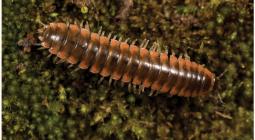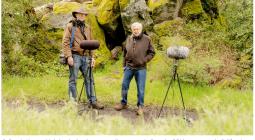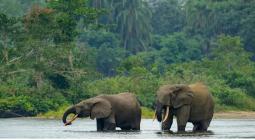Humans to push further into wildlife habitats across more than 50% of land by 2070 – study

A giraffe in Nairobi national park, where Kenya’s expanding capital is fragmenting and degrading wildlife habitats. Photograph: Amir Cohen/Reuters
Over the next 50 years, people will push further into wildlife habitats across more than half the land on Earth, scientists have found, threatening biodiversity and increasing the chance of future pandemics.
Humans have already transformed or occupied between 70% and 75% of the world’s land. Research published in Science Advances on Wednesday found the overlap between human and wildlife populations is expected to increase across 57% of the Earth’s land by 2070, driven by human population growth.
“You have places such as forests where there are virtually no people, where we will start to see some more human presence and activities, and interactions with wildlife,” said Neil Carter, the principal investigator of the study and an associate professor of environment and sustainability at the University of Michigan in the US.
“People are increasing their pressures and negative impacts on … species, which is something that we’ve seen already for many years. It is part of the cause of the biodiversity-loss crisis that we’re in,” he said.
As humans and animals share increasingly crowded landscapes, the bigger overlap could result in higher potential for disease transmission, biodiversity loss, animals being killed by people and wildlife eating livestock and crops, the researchers said.
Biodiversity loss is the leading driver of infectious disease outbreaks. About 75% of emerging diseases in humans are zoonotic, meaning they can be passed from animals to humans, and many diseases concerning global health authorities – including Covid-19, mpox, avian flu and swine flu – likely originated in wildlife. Understanding where people and wildlife will overlap is key to preventing “the acceleration of viral spillover from wildlife”, said Kim Gruetzmacher, a wildlife conservation veterinarian and researcher, who was not involved in the study.
“The vast majority – up to 75% – of emerging infectious diseases (which can lead to epidemics and pandemics) stem from non-human animals, the majority of which originate in wildlife,” Gruetzmacher said. “It is not the wildlife itself which poses a risk, but our behaviour and specific contact with it.”
To forecast future overlap between humans and wildlife, researchers at the University of Michigan compared estimates of where people are likely to inhabit land with the spatial distribution areas of more than 22,000 species.
The expansion of human and animal overlap will be most concentrated in regions where human population density is already high, such as India and China, they found. Agricultural and forest areas in Africa and South America will also experience substantial increases of overlap.
However, in some regions the human-wildlife overlap was projected to reduce, including across more than 20% of land in Europe.
The research can guide policymakers “to avoid the human and wildlife conflicts and focus more on the conservation of species richness,” said Deqiang Ma, the lead author of the study and a postdoctoral research fellow at the University of Michigan Institute for Global Change Biology.
Rob Cooke, an ecological modeller at the UK centre for Ecology and Hydrology, who was not involved in the study, said it gave a “broad picture overview of what’s happening and what could change”, but more research was needed into “what kinds of species and how are we going to interact, and what kind of repercussions does it have”.





